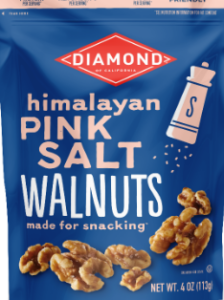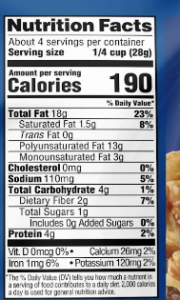
![]() 10 Sep 2024
10 Sep 2024
Did you know that your choices in the supermarket can significantly influence your daily health decisions? It’s easy to get lost among the attractive displays and make poor choices due to effective marketing. Many people find the nutrition facts on products confusing but understanding them is crucial for making informed decisions. In this blog post, we’ll guide you through the basics of reading and interpreting a nutrition facts label.


This refers to the amount typically consumed at one time; it does not necessarily imply the entire package. The calories and nutrients listed on the label are based on this serving size. For instance, if the serving size provides 190 Kcal, consuming that serving means you’re getting 190 Kcal.
Calories are a measure of the energy you get from consuming a particular food or beverage. Understanding the calorie content on the nutrition label is crucial for managing your weight, energy levels, and overall health.
A reasonable range per serving is typically between 150 to 200 Kcal. Based on our example, it contains 4 servings per container and each serving is 190 Kcal, consuming the entire package would mean 760 Kcal. Snack wisely!
This indicates how much of a nutrient one serving provides compared to the recommended daily intake based on a 2000-calorie diet. For instance, if a product has 20% DV of protein per serving, it contributes one-fifth of the daily requirement for protein.
Added sugars and sodium are often included in processed foods to enhance flavor, extend shelf life, or improve texture. However, excessive consumption of these ingredients can pose significant health risks.
When checking the nutrition label, aim for products that have little to no added sugars or sodium. Look for natural alternatives, like choosing fruits over sugary snacks or low-sodium versions of your favorite foods
Fiber is an essential nutrient that many people don’t get enough of in their diets. It plays a crucial role in maintaining digestive health, regulating blood sugar levels, and keeping you full longer, which can help with weight management.
High-fiber diets have been associated with a reduced risk of chronic diseases such as heart disease, type 2 diabetes, and certain types of cancer. Fiber also helps regulate blood sugar levels by slowing the absorption of sugar, which is particularly beneficial for people with diabetes.
When examining the nutrition label, aim for products that provide at least 5 grams of fiber per serving. Foods like whole grains, legumes, fruits, and vegetables are excellent sources of dietary fiber. Incorporating these into your daily diet can significantly improve your overall health.
Nutritional claims on packaging like “Gluten-free,” “Dairy-free,” “Low-fat,” or “Organic” can sometimes be misleading. While these claims may be true, they don’t necessarily mean that the product is healthy.
To make informed decisions, look beyond these claims and carefully review the full nutrition label, including the ingredient list, to understand the overall nutritional profile of the product.
Vitamins and minerals are vital for maintaining good health, and the nutrition label can help you identify foods that are rich in these essential nutrients.
Incorporating foods rich in these vitamins and minerals can help support overall health and prevent deficiencies. Look for products that offer high % DV of these key nutrients to ensure your diet is well-rounded and nutritious.
The ingredient list on a product’s nutrition label provides insight into what you’re really eating. The shorter and more straightforward the list, the better.
By focusing on products with short and simple ingredient lists, you can reduce your intake of unnecessary additives and ensure you’re consuming foods that contribute positively to your health.
In conclusion, making informed choices at the supermarket can have a significant impact on your daily health. By understanding nutrition labels, you empower yourself to select foods that support your well-being and avoid those that may compromise it. Stay mindful of serving sizes, calorie intake, nutrient content, and ingredient quality to make the best decisions for your health.

We noticed you haven't completed your delivery details.

Your message is sent